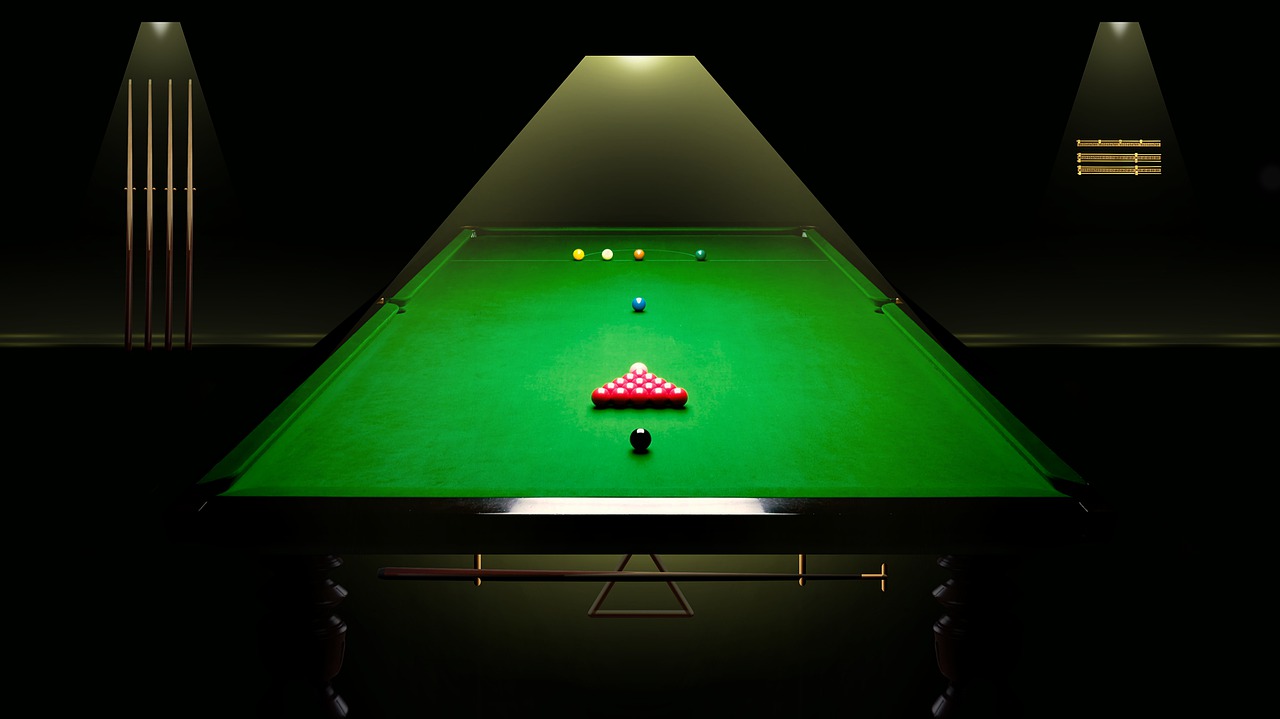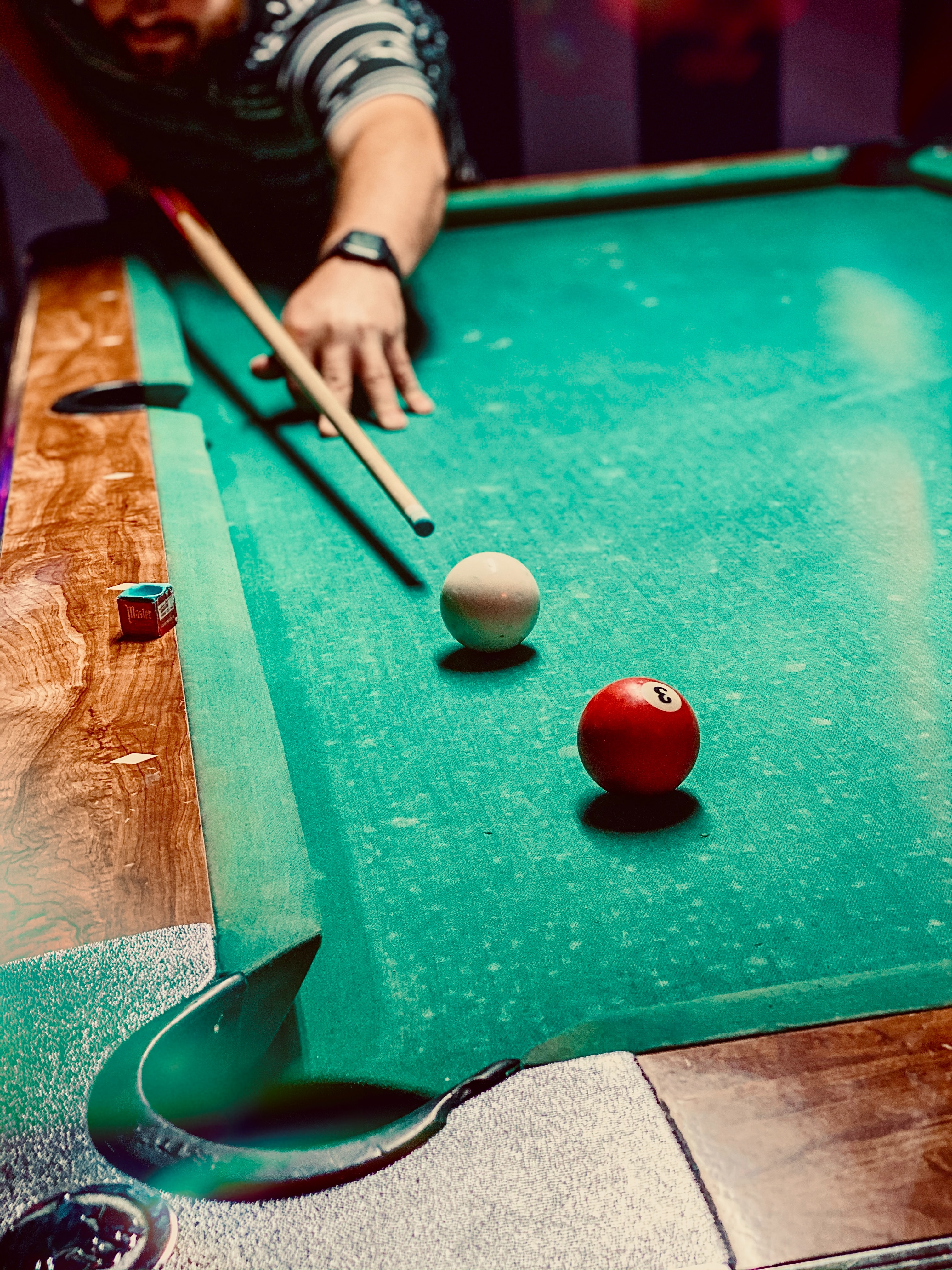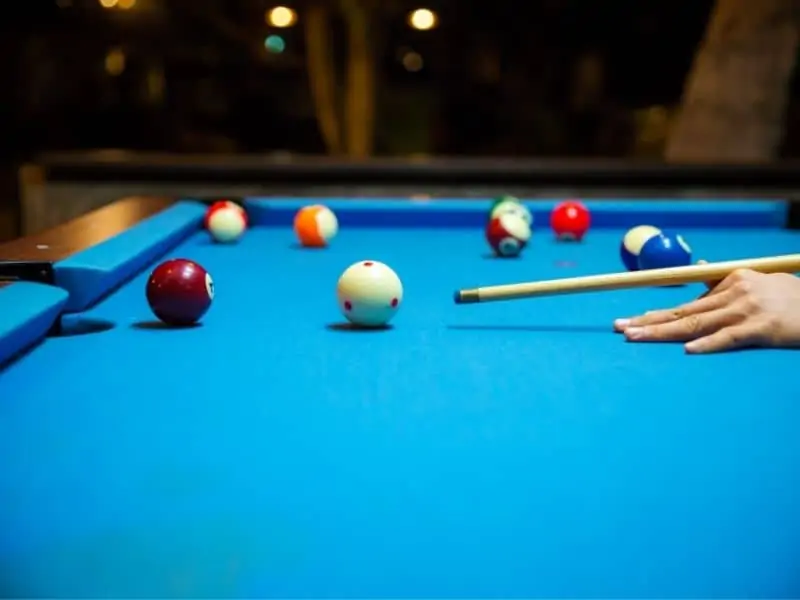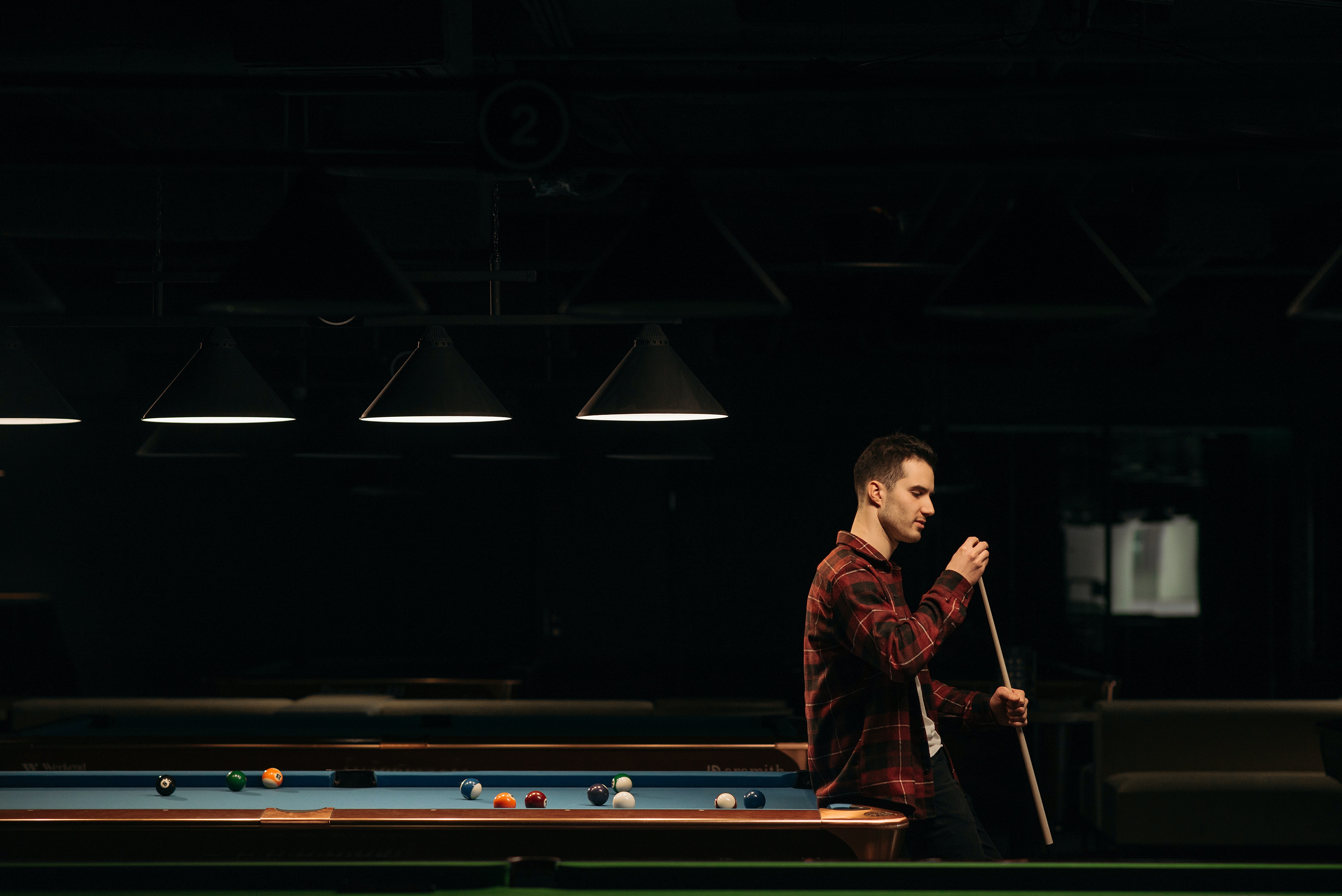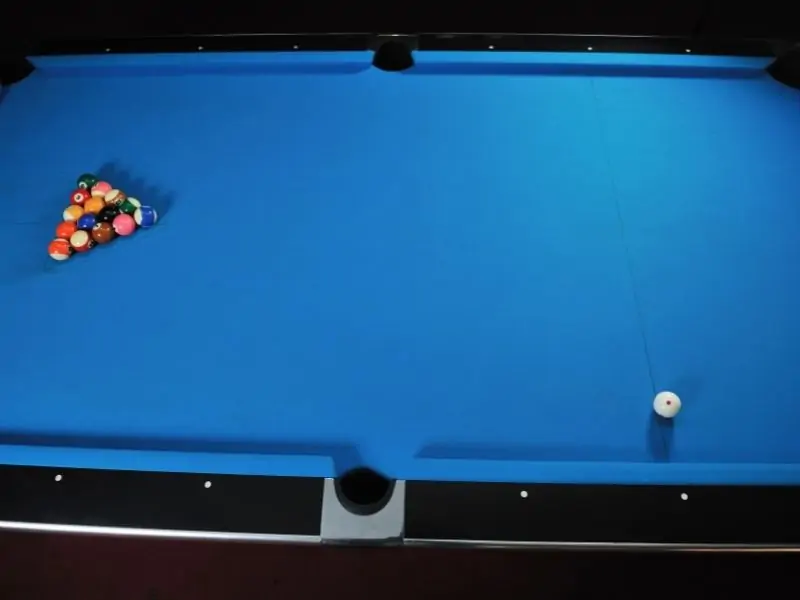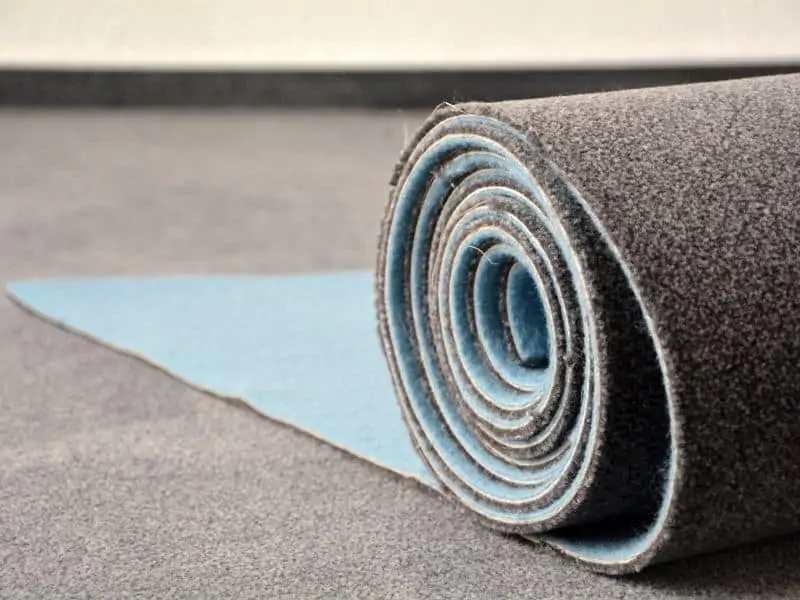Stroll into a bustling sports bar in New York or Los Angeles, and you’re likely to see animated players gathered around pool tables, meticulously lining up shots in a game of 8-ball. Venture over to a club in London or Beijing, however, and you might be greeted by the contemplative hush of a snooker match, with players mapping out their strategies several shots in advance. Depending on which corner of the world you find yourself in, the echoing crack of a cue ball might signify two very different games: snooker or pool.
This divergence isn’t a mere whim of preference, but a reflection of deeper historical and cultural narratives. Just as a country’s dishes, dialects, or dances provide insights into its heritage, the dominant cue sport – be it snooker or pool – offers a window into its societal evolutions and influences.
Yet, despite their regional distinctions, snooker and pool converge in many ways: in the strategy employed, the skills honed, and the thrill they offer both players and spectators. It’s this delicate balance of similarity and difference that has sparked debates, discussions, and a keen interest in understanding their unique attributes.
And so arises the crux of our exploration: “Snooker vs. Pool.” In this article, we will embark on a journey that navigates the intricate histories, rules, and cultural impacts of these two iconic cue sports.
Whether you’re a seasoned player, an intrigued observer, or someone caught in the midst of the “Snooker vs. Pool” debate, our deep dive promises clarity, knowledge, and a newfound appreciation for these timeless games. Join us as we cue up a tale of two tables.
Quick Glance: Snooker vs. Pool
| Feature | Snooker | Pool |
|---|---|---|
| Table Size | 12 feet x 6 feet | Varies (often 9 feet x 4.5 feet for professional) |
| Number of Balls | 21 (15 reds, 6 colored, 1 white) | Varies (often 16 for 8-ball: 7 solids, 7 stripes, 1 black, 1 white) |
| Ball Size | Smaller (approx. 52.5 mm for standard balls) | Larger (approx. 57.15 mm for standard balls) |
| Cue Length | 57-58 inches | Variable, but often around 57 inches |
| Tip Size | 9mm to 10.5mm | 12mm to 13mm |
| Pockets | Smaller and rounded | Larger and more forgiving |
| Major Tournaments | World Snooker Championship, The Masters | US Open 9-Ball Championship, Mosconi Cup |
| Famous Players | Ronnie O’Sullivan, Stephen Hendry | Efren Reyes, Jeanette Lee |
| Popularity Regions | UK, China | USA, Philippines, Taiwan, Europe |
| Key Skills | Precision, Long Potting, Break Building | Strategy, Bank Shots, Pattern Play |
| Cultural Impact | Big Break (TV show) | The Hustler, The Color of Money (Movies) |
This table offers a concise comparison between Snooker and Pool. While both games belong to the cue sports family, they possess distinct features and cultural imprints that make each unique and cherished in its own right.
Snooker vs. Pool: Highlighting the Key Differences
For many, the first glimpse of a green baize might not immediately signal whether they’re looking at a snooker or pool table. Yet, when we delve into the intricacies of these games, the distinctions become more evident. Here are some of the most significant differences between snooker and pool that set them apart:
- Table Size and Design
- Snooker: Typically larger, snooker tables can measure up to 12 feet in length. They feature tighter pockets, rounded at the openings, which demand a higher precision for potting balls.
- Pool: Pool tables are generally smaller, with most standard sizes hovering around 7 to 9 feet. The pockets are broader and have a straight cut, allowing a little more leniency in shots.
- Ball Setup and Scoring
- Snooker: There are 21 colored balls and 1 white cue ball. Each colored ball has a specific point value, and the objective is to score more points than the opponent by potting balls in a specific sequence.
- Pool: Depending on the variant (e.g., 8-ball, 9-ball), the number and setup of balls differ. In most cases, the objective is straightforward: pot your designated balls before sinking the game-winning ball (like the 8 in 8-ball).
- Cues
- Snooker: Snooker cues are often lighter and have a smaller tip, allowing for greater accuracy and control, given the game’s emphasis on precision.
- Pool: Pool cues are generally more robust, with a broader tip to cater to the different striking techniques and strategies employed in the game.
- Gameplay and Strategy
- Snooker: Given the table size and tighter pockets, snooker is a game of careful planning, where players often think several shots ahead. The emphasis is on precision and positioning.
- Pool: While strategy and positioning are crucial, pool offers a more aggressive style of play, with opportunities for defensive shots and “safety” plays.
- Cultural and Competitive Landscape
- Snooker: Predominantly popular in the UK, parts of Europe, and increasingly in Asia (notably China), snooker boasts grand tournaments like the World Snooker Championship.
- Pool: With its stronghold in North America and parts of Asia (like the Philippines), pool competitions, such as the US Open and the Mosconi Cup, draw significant attention.
These differences, though pronounced, contribute to the allure and richness of the world of cue sports. Whether you’re drawn to the meticulous artistry of snooker or the dynamic energy of pool, understanding these distinctions enriches the experience and deepens the appreciation for the complexities each game offers.
Intriguing Factoids: The Lesser-Known Tales of Snooker vs. Pool
Every sport carries with it unique stories, legends, and quirky bits of trivia that captivate enthusiasts and casual onlookers alike. When it comes to the fascinating world of cue sports, there’s no shortage of intriguing anecdotes. Let’s uncover some of the lesser-known, surprising, and even weird factoids that tie into the snooker vs. pool narrative:
- A Royal Hobby:
- Snooker: King George V of the United Kingdom was known to enjoy a game of snooker, and he even had a table installed in Buckingham Palace! The royal connection to the game goes to show its historical significance in British culture.
- Space-Age Pool:
- Pool: Astronauts on the International Space Station (ISS) once played a game of pool using food cans as balls. While it wasn’t a regulation game, it does highlight the universal appeal of cue sports… even in zero gravity!
- Origins in Names:
- Snooker: The term ‘snooker’ was military slang for first-year cadets or inexperienced personnel. It was humorously used by Sir Neville Chamberlain, not the later Prime Minister but a British Army officer, in reference to players who missed shots.
- A Pool Table on an Iconic Cover:
- Pool: The Beatles’ iconic “Sgt. Pepper’s Lonely Hearts Club Band” album cover features a variety of items scattered in the foreground, including a doll wearing a sweater that says, “Welcome The Rolling Stones.” Next to this doll? A tiny pool table.
- Expensive Tastes:
- Snooker & Pool: The most expensive snooker table, adorned with precious stones, was sold for a staggering $1.5 million. On the pool side, the most lavish table, designed with luxury car features, is valued at a cool $177,000.
- Chalk’s Mysterious Origins:
- Snooker & Pool: Players routinely chalk their cues, but few know why it’s colored blue. The original chalk was, in fact, white. However, green tables would show white chalk marks, so blue became the standard to minimize visible marks, even though most modern tables are blue!
- The Longest Frame:
- Snooker: The longest professional frame of snooker ever played took 100 minutes and 24 seconds during the 2015 World Championship. It’s a testament to the intense strategy and patience the game can demand.
These tidbits offer just a glimpse into the vast and vibrant tapestry of stories that surround snooker and pool. Each factoid, no matter how quirky, adds depth and dimension to our understanding and appreciation of these beloved cue sports.
Which Game Dominates: Snooker or Pool, and Where?
One of the most frequently posed questions when discussing cue sports is: “Which game is more popular, and in which parts of the world?” The answer isn’t straightforward, as the popularity of snooker and pool varies regionally and is influenced by historical and cultural factors. Here’s a breakdown:
- United Kingdom & Ireland
- Snooker reigns supreme here. With events like the World Snooker Championship held annually in Sheffield, snooker’s roots and popularity run deep in the British Isles.
- Asia
- Snooker: In recent years, China has emerged as a significant hub for snooker. With a surge in young talents and hosting multiple professional tournaments, snooker’s influence in China is undeniable.
- Pool: Countries like the Philippines and Taiwan have a rich pool-playing tradition, producing world-class players and hosting notable tournaments.
- North America
- Pool: The US, in particular, has a profound affinity for pool. Variants like 8-ball and 9-ball are staples in bars and recreational centers. Competitions such as the US Open 9-Ball Championship further underscore its popularity.
- Europe
- Pool: Widespread across the continent, especially in nations like Germany and the Netherlands. The European Pool Championship attracts players from across the region.
- Snooker: While snooker has pockets of popularity in Europe, its influence is not as widespread as in the UK or parts of Asia.
- Australia
- Pool: Particularly the “Australian Eight-Ball” variant, finds more favor in local pubs and clubs. Pool competitions at both state and national levels are prevalent.
- Snooker: While not as dominant as pool, snooker still enjoys a dedicated following, with tournaments and leagues operating across the country.
- Africa
- Snooker: In countries with a British colonial history, like South Africa and Zimbabwe, snooker maintains a steady presence, although it’s not as predominant as in the UK.
- Pool: Pool tables are commonly found in bars and clubs across many African countries, signaling its broader recreational appeal.
In essence, the snooker vs. pool debate regarding regional dominance depends largely on historical ties, cultural preferences, and the evolution of the sports in those areas. Each game, with its unique charm, finds its place and fervent fan base, no matter the geography.
Rules & Gameplay:
Cue sports, with their green canvases and mesmerizing ball patterns, might appear universally similar, but it’s within the bounds of their rules and gameplay that they carve their distinct identities. Here, we’ll shed light on the rules, gameplay, and nuances that characterize Snooker and Pool.
Snooker
Table Size: A standard snooker table measures a grand 12 feet by 6 feet. With a surface covered in green baize, the table features pockets located at each corner and in the middle of the longer sides.
Ball Setup: Snooker employs a total of 21 balls: 15 red balls, each worth 1 point; 6 colored balls with varied point values (yellow: 2, green: 3, brown: 4, blue: 5, pink: 6, and black: 7); and a white cue ball.
Rules & Scoring: Players aim to pot balls in a specific sequence: a red ball followed by a colored ball. Once all reds are potted, players aim to pot the colored balls in ascending order of their point values. The game’s score builds with each potted ball, and fouls (like potting the wrong ball) can grant points to the opponent. The player with the highest score at the end wins.
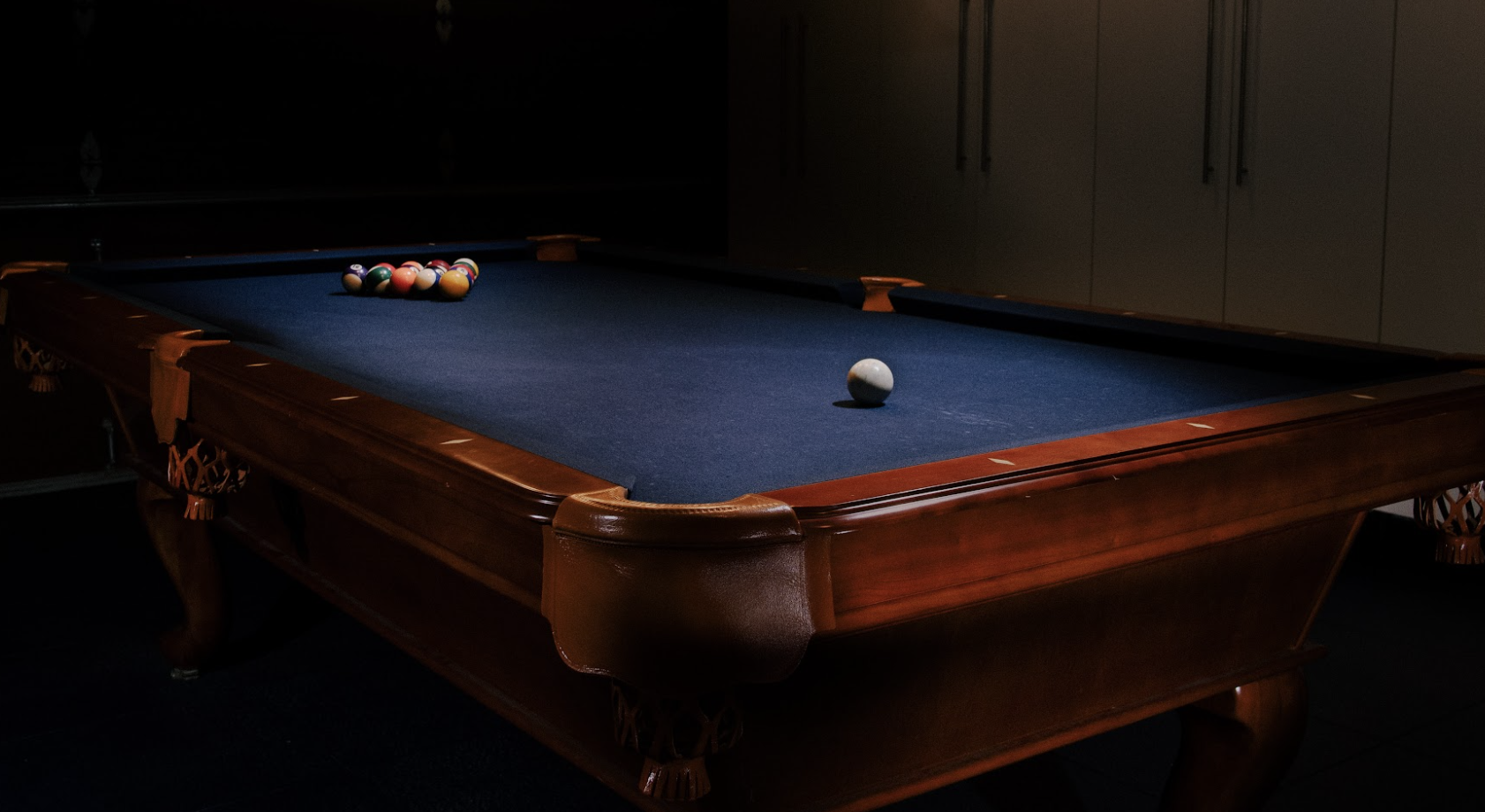
Pool
Table Size: Pool tables are more varied in size, but a common regulation-size table measures 9 feet by 4.5 feet. The pockets are broader than those on snooker tables, accommodating the larger ball size.
Ball Setup: Pool utilizes balls numbered 1 through 15, split into stripes (9-15) and solids (1-7), plus a white cue ball.
Variations & Rules
8-Ball: This is perhaps the most popular form of pool. Players are designated either “stripes” or “solids” based on the first type they pot. The objective is to pot all of one’s designated balls and then legally pot the 8-ball to win.
9-Ball: Played with just the balls numbered 1 through 9. Players aim to pot them in numerical order. The player to legally pot the 9-ball wins, even if it’s done before other balls are cleared, provided the shots are made in sequence.
Scoring: In Pool, the game’s outcome isn’t typically about points but about potting balls in the correct order or pattern. Fouls can result in penalties, often allowing the opponent a free shot or better positioning.
To sum it up, while Snooker emphasizes precision and a sequential scoring pattern, Pool offers varied gameplay with its different versions, focusing on patterns and strategy. Though they spring from the same family tree of cue sports, their individual sets of rules make them distinct and uniquely challenging in their own right.
Equipment & Gear:
The magic of cue sports lies not only in the rules and techniques but also in the equipment that facilitates the gameplay. Both Snooker and Pool, while similar at a glance, have fine differences in their gear that reflect and affect their unique gameplay styles. Let’s delve deeper into these distinctions:
Cues
Snooker:
Length: Snooker cues generally range from 57 to 58 inches in length, providing players with the appropriate reach for the larger snooker table.
Weight: These cues usually weigh between 18 to 20 ounces. Their balance is tailored to offer players optimal control over the smaller and lighter snooker balls.
Tip Size: Snooker cue tips are smaller, typically ranging from 9mm to 10.5mm, allowing for more precise shots given the intricacy of the game.
Pool:
Length: Pool cues, while similar in length, can sometimes be shorter, especially in bars or homes with space constraints.
Weight: They often weigh between 19 to 21 ounces, offering a heftier strike to move the larger pool balls.
Tip Size: Pool cue tips are broader, typically between 12mm to 13mm, facilitating a stronger impact on the ball.
Tables
Snooker:
Table Length: As mentioned earlier, snooker tables are notably large, measuring 12 feet by 6 feet.
Pocket Size: The pockets in snooker are smaller and rounded, demanding greater accuracy from players.
Cloth: The cloth on a snooker table is generally napped woolen cloth, which means it has a slight directional texture, affecting ball travel.
Pool:
Table Length: Pool tables come in various sizes, but professional ones measure 9 feet by 4.5 feet.
Pocket Size: Pockets on pool tables are wider, and the jaws are more forgiving, making potting relatively more straightforward.
Cloth: Pool tables often use a smoother, napless cloth, leading to a faster game.
Unique Equipment
Snooker:
Rests: Given the larger table size, snooker often requires players to use rests, which are extensions to help players reach distant balls. There are various types of rests, such as the spider rest, cross rest, and extended rest, each designed to assist in different situations.
Pool:
Bridges: Similar to the snooker rest, pool has a bridge – a stick with a notched head – to assist in reaching shots. The bridge head can be placed in various positions to provide the required support.
Rack: This triangular or diamond-shaped frame is used to set up the balls at the start of a game, with designs differing for 8-ball and 9-ball setups.
Understanding the equipment’s nuances provides insight into the very ethos of Snooker and Pool. It’s a reflection of the precision, strategy, and technique that both demand, albeit in their unique ways.
Strategies & Techniques:
Peeling back the layers of Snooker and Pool, beyond their equipment and rules, we find a complex web of strategies and techniques that truly differentiate the games and highlight their intricacies. This realm is where champions are made, and where the games’ true colors shine brightest.
Skills Required
Snooker:
Precision: Given the smaller pockets and tighter clusters of balls, snooker places a premium on shot accuracy. A slight miscalculation can lead to missed opportunities or even penalties.
Long Potting: With the expansive table, players often need to pot balls over long distances, demanding excellent cueing technique.
Break Building: Skilled snooker players can pot balls in sequences that keep them at the table, amassing large points before their opponent gets a chance.
Pool:
Strategy: With variations like 8-ball, the strategy becomes crucial. Deciding which balls to pot and in which order can set the tone for the entire game.
Bank Shots & Kicks: Pool players frequently use cushions to make indirect shots, either because of defensive plays by the opponent or to position for the next shot.
Positional Play
Snooker:
Cue Ball Control: Mastery in snooker often comes down to controlling the cue ball’s position after each shot. By planning several shots ahead, players can create a flow, making subsequent pots easier and maintaining their turn.
Safety Play: When an advantageous shot isn’t apparent, players strategically position the cue ball to make the next shot difficult for their opponent, often hiding it behind another ball.
Pool:
Pattern Play: Especially in games like 8-ball, players try to find a sequence or “pattern” to clear their designated balls efficiently, minimizing difficult shots.
Defensive Play: Similar to snooker, pool players might opt for safety shots, but these often involve leaving the cue ball at the table’s far end or snuggled up against another ball.
Iconic Players
Snooker:
Ronnie O’Sullivan: Often hailed as the game’s greatest, his exceptional break-building, ambidextrous play, and ability to pull off incredibly challenging shots make him a marvel in the snooker world.
Stephen Hendry: With seven World Championships under his belt, Hendry’s clinical style and relentless winning mentality set him apart in his prime.
Pool:
Efren Reyes: Known as ‘The Magician’, Reyes is renowned for his exceptional cue ball control, innovative shots, and deep understanding of angles. His humility and sportsmanship are as legendary as his skills.
Jeanette Lee: Nicknamed “The Black Widow,” Lee stands out not just for her exceptional gameplay but also for her contributions to promoting the sport and mentoring the next generation.
While both games require a blend of precision, strategy, and technique, the weightage of each varies. Snooker leans more towards meticulous precision, while pool often emphasizes strategic mastery. However, champions in both realms possess a harmonious blend of all these elements, making them stand out and etching their names in the annals of cue sports history.
Cultural Impact & Popularity:
As with many sports, Snooker and Pool aren’t merely games played on a table; they’ve intertwined with the very fabric of cultures, leaving imprints across cinema, events, and societal nuances, varying by region and intensity.
Regional Popularity
Snooker: This game has found its stronghold primarily in the United Kingdom, especially in England and Wales. However, in recent decades, snooker has seen a surge in popularity in Asia, particularly in China, where young talents are emerging and the game’s viewership is skyrocketing.
Pool: Predominantly popular in North America, especially in the US, pool is often seen as a casual pastime in bars and recreation centers. However, on the competitive front, countries like the Philippines, Taiwan, and parts of Europe have produced world-class pool players, making it a global phenomenon.
Major Tournaments & Events
Snooker:
The World Snooker Championship: Held at the Crucible Theatre in Sheffield, England, it’s the pinnacle of snooker events, drawing global attention annually.
The Masters: Another significant UK-based event, it gathers the elite players for a non-ranking showcase of talent.
Pool:
The US Open 9-Ball Championship: One of the longest-running and most prestigious pool tournaments in the world.
The Mosconi Cup: A yearly event where teams from Europe and the US clash, often dubbed the “Ryder Cup of Pool.”
Pop Culture References
Snooker:
“Big Break”: A British TV show combining snooker skills with a game show format, it ran for over a decade and became synonymous with the game in the UK.
Pool:
“The Hustler” and “The Color of Money”: Two iconic films starring Paul Newman, the former introduced audiences to the gritty, competitive world of pool hustling, while the latter, its sequel, featured a young Tom Cruise, cementing pool’s place in Hollywood lore.
“Poolhall Junkies”: Another film that delves into the highs and lows of pool hustling and its cultural implications.
Final Thoughts:
Snooker and Pool, though siblings in the vast family of cue sports, each offer a unique flavor and allure. Snooker, with its regal roots, demands precision and long-term strategy, capturing the imagination of audiences with its fluid breaks and high-stakes safety play. Pool, versatile and strategic, can be a casual game amongst friends or an intense battle of patterns, defenses, and bold shots on the professional stage.
They both serve as mirrors to the regions they dominate - snooker reflecting the quiet intensity and tradition of the UK and its growing global appeal, and pool echoing the laid-back yet competitive spirit found in American bars and global championships.
In the vast mosaic of cue sports, both snooker and pool hold integral tiles, adding color, texture, and depth. They are not just games but reflections of history, culture, and human endeavor. They’ve both earned their revered places, and their legacies are sure to cue up passions for generations to come.




